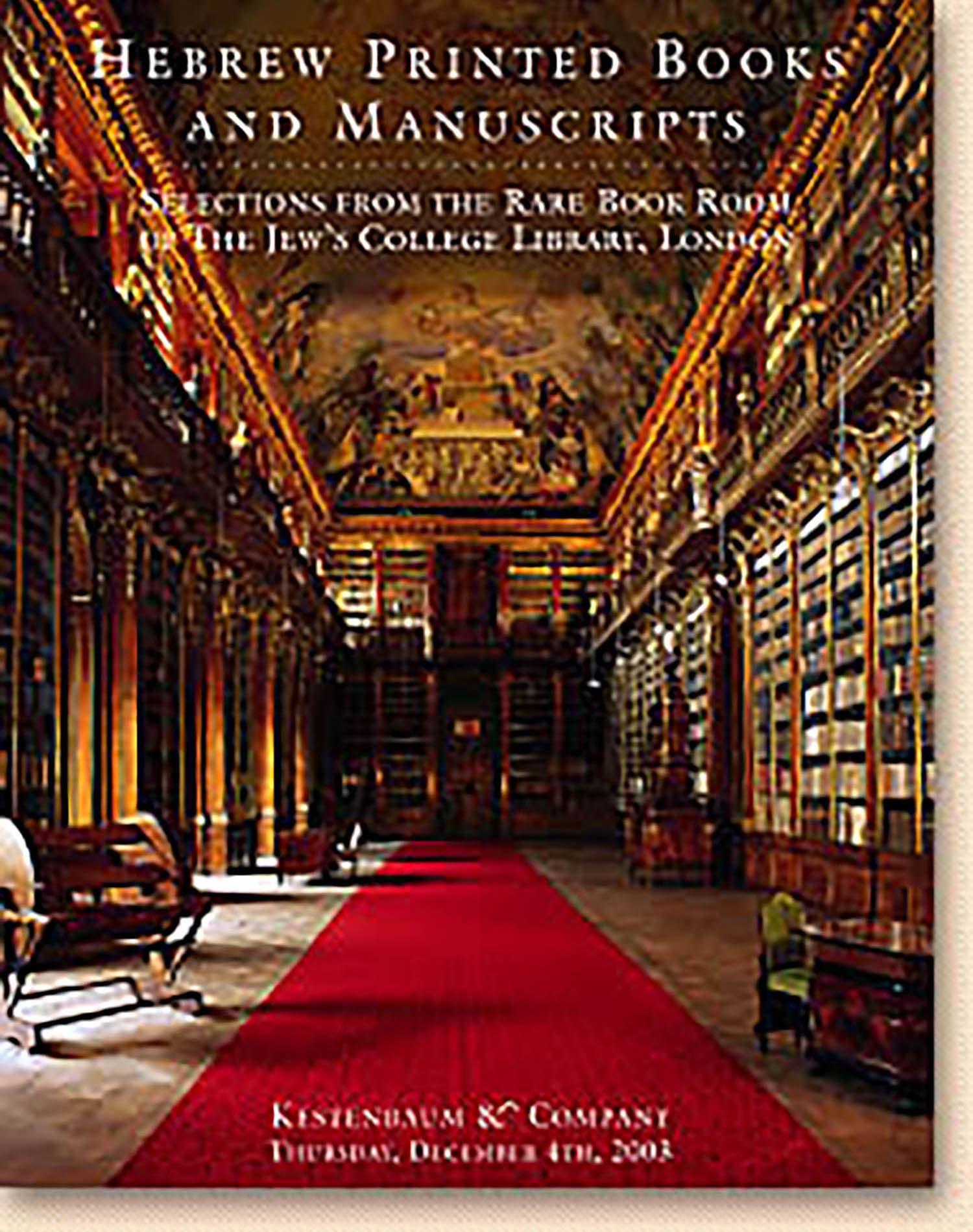RAZIEL HAMALACH. Anonymous.

AUCTION 21 |
Thursday, December 04th,
2003 at 1:00
Kestenbaum & Company Holds Inaugural Auction of Hebrew Printed Books & Manuscripts at Their New Galleries
Lot 128
(KABBALAH)
RAZIEL HAMALACH. Anonymous.
Amsterdam: Moses Mendes Coitinho 1701
Est: $1,200 - $1,800
PRICE REALIZED $2,200
A cornucopia of mystical texts and magical recipes. Though the title purports that the book was handed by the angel Raziel to Adam, it has long been known even in the most traditional circles that the work is in fact medieval in origin. The perspicacious Rabbi Zadok Hakohen of Lublin, a hasidic rebbe with a critical faculty, attributes authorship to Rabbi El’azar of Worms, author of Roke’ah. “Sepher Raziel, which is attributed to Adam, was composed by the author of Roke’ah. In the introduction to the book, it is written that he [the author of Roke’ah] signed on it. This means that he is the author [of Raziel], not the copyist, as the writer of the introduction thought. One who studies the book regarding ethics, the root of piety and fear of God, will find these things verbatim in Roke’ah. From the style of many passages it is recognizable that he [the author of Roke’ah] is its author.” Rabbi Zadok Hakohen of Lublin, Sepher ha-Zichronoth, appended to Divrei Sophrim (Lublin, 1913), 34c-d; Uziel Fuchs, “‘Critical’ comments in the writings of R. Zadok Hakohen of Lublin,” in Gershon Kitsis ed., Me’at la-Tzadik (Jerusalem, 2000), pp. 266-267. (Fuchs does not provide the bibliographic source of the quote.) See further L. Zunz, Sepher ha-Derashot, chap. 9, n. 66; R. David Cohen, Kol ha-Nevu’ah (Jerusalem, 1979), p. 141, n. 15.
According to Scholem, pp. 7b-24a are actually the first part of El’azar’s voluminous work Sodei Razaya. Yoseph Dan isolated three strata in Raziel: 1) millenia-old Hekhalot literature; 2) material of the Hasidei Ashkenaz (medieval Rhineland pietists); and 3)collectanea of pre-Lurianic theology.
In the introduction, the ba’al magi’ah (editor), “Isaac son of Abraham, justice of K.K. Amsterdam,” writes he had the manuscript in his possession for the longest time but hesitated publishing it until he saw that most of the material was already publicized in a French work “Alphabets of the Entire World.” (Probably the so-called “angelic script” on ff. 44 of Raziel appears in a compendium of alphabets. We have been unsuccessful in identifying the French title the editor refers to.) Furthermore he checked the accuracy of his manuscript against two others, and discovered that his was the matrix of the others. Its accuracy was attested to by the signature “Ha-Katan El’iezer [sic] ben a[doni] m[ori] R. Judah,” i.e. El’azar ben Judah of Worms, author of Roke’ah.
G. Scholem, Major Trends in Jewish Mysticism (New York, 1967), p. 373, n. 66; EJ, Vol.13, cols. 1592-3; Vol. 6, cols.592-594.
Many of the signs or seals (“angelic script”) in Raziel, pp. 41a, 44a-b, show up in amulets from the Arab world as well. Scholem first noticed this. See Edmond Doutté, Magie et Religion dans l’Afrique du Nord (Algiers, 1909), pp. 155,158, 248, 272; Gershom Scholem, Studies in Kabbalah I (Tel Aviv, 1998), p. 155, n. 28.
Because of the popular belief that the book is protection from fire, many keep a copy of Raziel in the home, or today, in the automobile.
